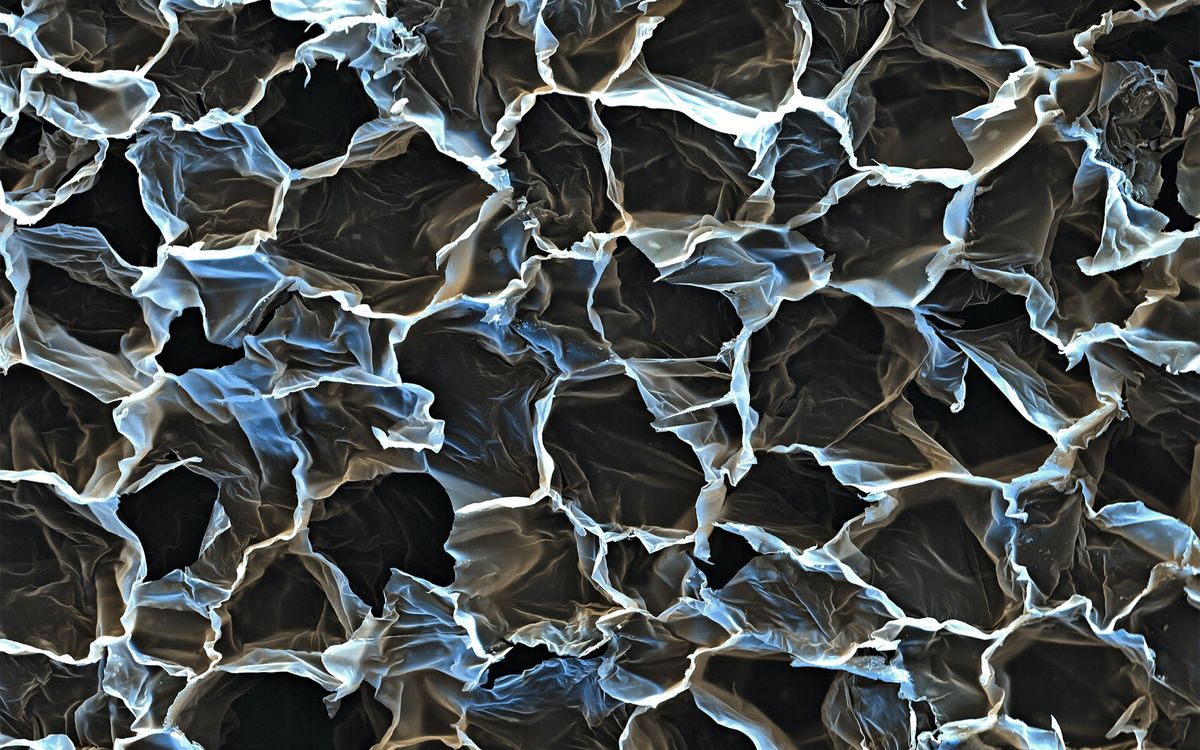Zhenan Bao at Stanford University has invested a lot of her research into building flexible circuits out of carbon nanotubes.
Her team’s latest feat is an “artificial skin” that’s capable of providing the sense of touch directly into the brain cells of mice and is initially aimed for use in prosthetic limbs to give the users the full sense of touch.
While the mechanism for transferring the sensory signals from the artificial skin to the brain is something called “optogenetics”—which uses light to control cells in living tissue—the basis for the artificial skin is a unique pyramidal geometry of carbon nanotubes (CNTs).
“Using pyramids allows us to tune the sensitivity and range of sensors very easily, which was important for this project,” explained Alex Leslie Chortos, the first author of the paper published in Science, in an e-mail interview. “We had to optimize the electrical impedance and pressure range of the sensors to work with the other circuit components. By changing things like the size and spacing of the pyramids, we could readily optimize the sensor to have the characteristics that we needed.”
Chortos and his colleagues discovered that using an unstructured film resulted in a sensitivity that was much too low for what they were trying to do. While it is possible to produce a pressure sensor with this sensitivity that does not have pyramids, it would have entailed doing things like changing the modulus of the rubber, which is relatively more difficult and has other negative effects.
In operation, as the pressure on the CNT sensor increases, the CNTs are compressed closer together, which reduces the resistance through the sensor.
“The carbon nanotube sensor detects the stimuli and the compression of the composite reduces the resistance and increases the current,” explained Chortos. “This signal is reported by coupling the sensor to an electrical oscillator that creates voltage pulses. As pressure is applied to the sensor, the frequency of the voltage pulses generated by the oscillator increases.”
The device the Stanford researchers developed relies on two core technologies: the pressure sensor and the flexible electronics layer. According to Chortos, the pressure sensor could be used in wearable electronics and smart robotics, while the flexible electronics layer (made by Xerox Palo Alto Research Center) could measure information from sensors that are used in wearable electronics and flexible displays.
A prosthetic limb that could deliver the sense of touch directly to the brain would be groundbreaking. But work still needs to be done to for that to happen.
“Before this technology could be used in prosthetic limbs, we would need to improve the stability and durability of the circuit layer of the device and improve the fabrication processes to allow scalable production of sensors skins that include all of the necessary circuit components in a compact form,” said Chortos.
The artificial skin the Stanford team has developed could be a general platform for generating electrical signals that are compatible with biology. While they demonstrated this technology is capable of serving as a pressure sensor, real skin has many other functions.
“Future work will involve increasing the range of sensory capabilities by including sensors for stretching (strain), temperature, and vibration in addition to pressure,” said Chortos. “One important component of future work will involve working with a collaborator who has experience with electrically interfacing with nerves in live animals.”
Dexter Johnson is a contributing editor at IEEE Spectrum, with a focus on nanotechnology.



